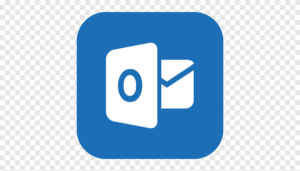Startups typically operate on a lean budget and must carefully manage their resources to maximize their chances of success. In order to secure funding from investors, they need to demonstrate that their business is viable and has the potential to be profitable. They can only do this by increasing their business’s bottom line- FAST! This is something that growth hacking promises. What is it, and how growth hacks fuel your business expansion? Let’s find out.
What is Growth Hacking?
Growth hacking is a term that was coined by Sean Ellis in 2010 to describe a data-driven approach to marketing that focuses on finding and exploiting growth opportunities rapidly and iteratively. It involves using a variety of tactics, such as testing, data analysis, and automation, to identify and scale marketing efforts that drive business growth.
Growth hacking gained popularity in the early 2010s as startups, and small businesses sought ways to grow their user base and revenue quickly and efficiently. Many of these companies had limited resources, so they needed to be creative and resourceful in their marketing efforts. This led to the development of growth hacking strategies, which often involve using unconventional or non-traditional marketing techniques to drive growth.
Growth hacking can be an effective way to drive business growth, but it is not a magic solution that can fix a poorly-designed product or solve a problem that does not exist. In order to be successful with growth hacking, it is important to have a product that addresses a real need or problem for a target audience.
A product-market fit is essential for growth hacking to succeed because it ensures that the product or service offered is relevant and valuable to the target audience. Without a product-market fit, growth hacking efforts are likely to be less effective because there is not a clear need or desire for the product among potential customers.
That said, growth hacking can still be useful even if the product is not fully developed or solves a problem. By continuously testing and experimenting with different growth strategies, a growth hacker can help identify areas for improvement in the product and work to refine and optimize it over time.
Overall, growth hacking can be a powerful tool for businesses, but it is important to have a strong foundation in place, including a well-designed product and a clear understanding of the target audience, in order to achieve success.
Many different methods can be used in growth hacking, and the specific tactics that will be most effective will depend on the nature of the business and its target audience. Here are a few examples of common growth hacking methods:
- Viral Marketing
In viral marketing, marketers create content or campaigns that are designed to be shared widely on social media or other online platforms. The goal is to get people to share the content with their networks, thereby expanding the reach of the marketing message
- Conversion Rate Optimization
This involves analyzing and testing different elements of a website or landing page (such as the layout, copy, and calls to action) in order to improve the rate at which visitors take the desired action (such as making a purchase or signing up for a newsletter).
- Search Engine Optimization (SEO)
Marketers optimize a website or content for higher ranking in search engine results pages. This can be achieved through techniques such as keyword optimization, link building, and creating high-quality content.
- Referral Marketing
This involves incentivizing customers to refer their friends or colleagues to the business, either through referral programs or by creating referral-friendly products or services.
- Social Media Marketing
Social media marketing platforms such as Facebook, Twitter, and Instagram are used to promote a business and engage with customers.
- Content Marketing
This involves creating and distributing valuable, relevant, and consistent content to attract and retain a clearly defined audience and drive profitable customer action.
- Influencer Marketing
This involves partnering with influential people in your industry or niche to promote your business to their followers.
These are just a few examples of the many growth hacking methods that are available. The key is to find the best tactics for your business and continuously test and optimize your efforts to achieve the best results.
Now let us see the proven growth hacks that successful businesses have implemented.
Best Growth Hacks for your Business Ft. Brands
Each of the growth marketing hacks (read brands) we have listed below has used some of the best growth hacking principles.
Used Craiglist- AirBnB

Airbnb did indeed get its start on Craigslist. The company was founded in 2008 by Brian Chesky and Joe Gebbia, and it initially focused on offering a platform for people to list and book unique accommodations, such as vacation rentals, apartments, and even spare rooms in their homes.
To attract attention and build its user base, Airbnb utilized a variety of marketing strategies, including targeting specific events and leveraging social media. However, one of the key ways that the company grew was by using Craigslist to reach a larger audience.
By posting its listings on Craigslist, Airbnb was able to tap into the massive user base of the popular classifieds website and reach a wider audience of people who were looking for alternative accommodation options. As a result, Airbnb was able to scale quickly, going from 50,000 listings to 550,000 listings in a short period of time.
Today, Airbnb is a global company that has become a household name and has disrupted the traditional hospitality industry. Its success is a testament to the power of creativity, hard work, and leveraging existing platforms to reach a larger audience.
Referral Program and Free Resources- DropBox

Dropbox is often cited as a great example of a company that utilized growth hacking techniques to achieve rapid growth. One of the key strategies that Dropbox used was offering free storage space to users in exchange for inviting their friends to join the platform.
This referral program was extremely successful for Dropbox, as it incentivized users to spread the word about the service and bring in new users. As more and more people joined Dropbox, the company’s user base and storage capacity grew rapidly, which helped to drive further growth and success.
In addition to its referral program, Dropbox also used a variety of other growth hacking techniques, such as optimizing its onboarding process, experimenting with different pricing models, and leveraging social media to reach a wider audience. These efforts contributed to Dropbox’s rapid growth and helped establish it as a leader in the cloud storage industry.
Scarcity Principle- Google+

It’s true that Google+ used an invite-only strategy as a growth hack when it launched in 2011. By limiting access to the platform and making it exclusive, Google+ was able to generate interest and curiosity among potential users, which helped to drive initial adoption and growth.
This approach is known as the “scarcity principle,” which suggests that people are more likely to want something that is perceived as rare or limited in availability. By applying this principle, Google+ was able to create a sense of urgency and exclusivity that motivated people to seek out invitations and join the platform.
While Google+ did see some initial success with this approach, it ultimately struggled to gain traction and become a major player in the social media space. However, the invite-only strategy can be an effective way for companies to generate buzz and interest in a new product or service, especially if they are unable to accommodate a large number of users during the initial launch phase.
Promotional Message, Content Marketing- Hotmail

Hotmail is a well-known example of a company that used a growth hack to achieve rapid growth. For example, Hotmail implemented a strategy of adding a promotional message to the footer of every email sent through its platform. This message, which read “PS: I love you. Get your free email at Hotmail,” effectively turned every user of the service into a walking advertisement for Hotmail.
This growth hack was extremely successful for Hotmail, as it helped to spread awareness of the service and drive new sign-ups. In just six months, Hotmail was able to acquire 1 million users, and within five weeks, it reached the 2 million mark.
The success of Hotmail’s growth hack highlights the power of leveraging existing user networks and utilizing creative and cost-effective strategies to drive growth. Today, the practice of adding promotional messages to the footer of emails is common and has been adopted by many other companies as a way to promote their products and services.
Product-Market Fit, Influencer Marketing, Social Media Marketing- Instagram

Instagram is a great example of a company that achieved success through strong product-market fit. Instagram was able to meet the needs and desires of its target audience at the right time, and this helped to drive its rapid growth.
Instagram was launched in 2010, at a time when smartphones were becoming more prevalent, and people were beginning to take and share more photos. The app provided an easy-to-use platform for users to share their photos and connect with friends and followers, which resonated with users and helped to drive adoption.
In addition to strong product-market fit, Instagram also utilized a variety of other growth strategies, such as leveraging social media, partnering with other companies and influencers, and implementing features that encouraged users to share more content. All of these efforts contributed to Instagram’s success and helped to establish it as a major player in the social media space.
Instagram’s focus on social interaction and sharing was a key factor in its success. By providing a platform for users to share their photos and connect with friends and followers, Instagram created a strong sense of community and engagement that helped drive growth.
Integrating with other social media platforms, such as Facebook and Twitter, also helped to increase Instagram’s reach and exposure, as users were able to share their photos with a wider audience.
In addition, Instagram’s founders used influencer marketing as a way to promote the app and generate buzz. By sending the app to journalists and tech enthusiasts, they could secure positive reviews and coverage in industry publications, which helped increase awareness and drive adoption.
Overall, Instagram’s success can be attributed to a combination of strong product-market fit, effective marketing and growth strategies, and a focus on social interaction and sharing that resonated with its target audience.
Search Engine Optimization- LinkedIn

LinkedIn’s focus on search engine optimization (SEO) was a key factor in its growth. By allowing users to create public profiles indexed by search engines, LinkedIn increased the visibility of its users beyond the platform, which helped to drive adoption and growth.
By appearing in search results, LinkedIn users were able to reach a wider audience and potentially attract more opportunities, such as job offers or business connections. This added value for users and helped to drive sign-ups and engagement on the platform.
In addition to its focus on SEO, LinkedIn also offered a valuable service for professionals looking to network and find jobs, which resonated with its target audience and helped to drive adoption.
Overall, LinkedIn’s success can be attributed to a combination of strong product-market fit, effective marketing and growth strategies, and a focus on providing value to its users beyond its primary value proposition.
Referral Program and Partnership with eBay- PayPal

PayPal’s referral program was a key factor in the company’s growth. By offering a financial incentive for users to refer their friends and family, PayPal was able to quickly expand its user base and establish itself as a dominant player in the online payment space.
In addition to the referral program, PayPal also benefited from its partnership with eBay, which helped to drive traffic to the platform and increase the number of transactions being processed through the service.
This, combined with the company’s focus on providing a secure and convenient way for individuals and businesses to make and receive payments online, contributed to PayPal’s success and allowed it to become one of the most popular payment methods on the internet.
Localization- Uber

Uber has used a variety of strategies to successfully enter new markets and establish itself as a leading ride-sharing platform. One of these strategies has been carefully assessing each city’s local market conditions before launching. This has allowed Uber to identify locations where there is a high demand for ride-sharing services and tailor its offerings to meet the specific needs and preferences of local customers.
In addition to addressing the pain points of traditional taxi services, Uber has also used a variety of marketing tactics to attract and retain customers. These have included offering discounts and promotions, introducing new features and services, and building partnerships with local businesses and organizations. By adopting a local approach and carefully considering the unique needs of each market, Uber has been able to successfully expand its operations around the world and become a household name in the ride-sharing industry.
Offering incentives to new users has been an effective strategy for Uber in attracting and retaining customers. By offering a discount or credit towards their first ride, Uber has been able to remove some of the barriers that might prevent someone from trying the service for the first time, such as concerns about cost or unfamiliarity with the platform. This has helped to encourage more people to try Uber, and many of these users have become long-term customers as a result.
In addition to offering incentives, Uber has also relied heavily on word-of-mouth advertising and PR to promote its brand and grow its user base. By highlighting the simplicity and convenience of its service and by leveraging legal battles and other controversies to generate media attention, Uber has been able to attract new customers and build loyalty among its existing user base. These tactics have helped to make Uber a household name and a dominant player in the ride-sharing industry.
Simple and User-friendly Platform- YouTube

YouTube’s simple and user-friendly platform was key to the company’s rapid growth. By allowing anyone to easily upload and share videos on the platform and by making it easy for users to embed these videos on other websites, YouTube quickly became the go-to destination for online video hosting. This helped drive traffic to the platform and increase the number of videos being viewed on YouTube, which attracted more advertisers and helped generate revenue for the company.
In addition to its user-friendly platform, YouTube benefited from the widespread adoption of broadband internet, making it easier for people to access and watch high-quality video content online. As a result, YouTube was able to attract a large and diverse audience, and today it has over 1 billion unique visitors each month, making it one of the most popular websites in the world.
Customer-Centric Approach- Slack

Slack has been incredibly successful in revolutionizing the way companies communicate internally. The company’s focus on customer satisfaction and continuous improvement has played a key role in its growth and success. By progressively releasing the software to larger groups and actively seeking and responding to customer feedback, Slack has been able to continuously improve its platform and meet the needs of its users.
In addition to focusing on customer satisfaction, Slack has also been successful in marketing itself as a solution to information overload and a way to improve team communication and organization. By framing its product as a way to reduce stress and increase productivity, Slack has been able to attract a large and diverse customer base and become a leader in the business communication software market.
The company’s rapid growth in its early days, with 8,000 invitation requests on the first day of its preview release and 15,000 within two weeks, is a testament to the strong demand for its product and the value it provides to its users.
There you have it! These are some of the ways brands leveraged growth hacking to achieve success.
Growth hacking is all about testing and learning, and there is no one-size-fits-all solution or recipe for success. It’s important to take inspiration from other successful growth hacks and use them as a starting point, but it’s also important to think creatively and be willing to experiment and try new things.
One key aspect of growth hacking is the willingness to take risks and try new things, even if they may not work out. The goal is to continuously learn and iterate in order to find the most effective and efficient ways to grow a business. This may involve testing different marketing strategies, experimenting with new technologies or platforms, or trying out different business models.
Ultimately, the key to success in growth hacking is to have a growth mindset, be willing to learn and adapt and be open to trying new things and taking risks in order to achieve your goals.
But how to do that? Let’s discuss the 5 most important steps in implementing a growth hacking experiment.
What are the Steps Involved in Implementing Growth Hacks?
Growth hacking experiments are designed to follow a systematic process similar to the scientific method. This allows you to carefully test and measure the results of your efforts in a controlled and repeatable way.
Step-1: Reviewing the Current Marketing Results
Reviewing your current marketing results is an important first step in the growth hacking process. By taking the time to assess your current marketing efforts, you can identify areas for improvement and better understand what is and isn’t working for your business. This can help you to focus your efforts on the most effective tactics and channels and avoid wasting time and resources on strategies that aren’t producing results.
Step-2: Setting Achievable Goals
Setting achievable goals is an important part of the growth hacking process. By setting SMART goals (specific, measurable, achievable, relevant, and time-bound), you can ensure that your efforts are focused and that you have a clear idea of what success looks like. This can help you to stay motivated and track your progress as you work towards your goals.
Step-3: Laying Out a Hypothesis
Brainstorming with your team is a helpful way to generate a list of hypotheses and ideas for growth hacking experiments. By bringing different perspectives and expertise to the table, you can come up with a wider range of ideas and approaches to test.
Step-4: Running the Experiments
It is important to run your growth hacking experiments one at a time in order to accurately track and measure the results. This will allow you to isolate the effects of each experiment and determine which tactics are most effective in helping you reach your goals.
Step-5: Documenting the Results
It is important to carefully document the entire growth hacking process, including the hypotheses you are testing, the experiments you are running, and the results you are achieving. This will allow you to replicate the experiment in the future if needed and also make it easier to share your results with your team and stakeholders.
Implement the steps mentioned above and watch as you succeed.
Master Growth Hacks!
Growth hacking often involves incorporating features into the product that encourage sharing and social interaction, as well as thinking creatively and using unconventional channels to promote the product.
One of the key principles of growth hacking is the idea that the value a customer gets out of a product can be increased through sharing and social interaction. By building features into the product that encourage users to invite their friends and family or to share content on social media, companies can create a virtuous cycle of growth. As more people use the product and share it with others, the product’s value increases for all users, attracting more people to the platform.
In addition to incorporating features that encourage sharing and social interaction, growth hackers also look for creative and unconventional ways to promote the product and reach new audiences. This may involve using social media influencers, partnering with other companies or organizations, or leveraging online communities and forums to spread the word about the product. By thinking outside of the box and trying new and untested ideas, your growth hacking company can help you find new and innovative ways to grow and succeed.



